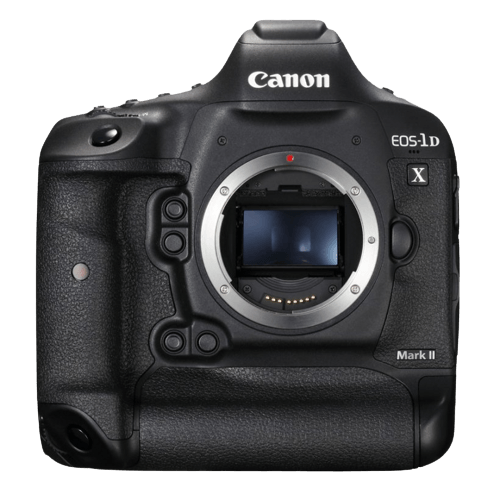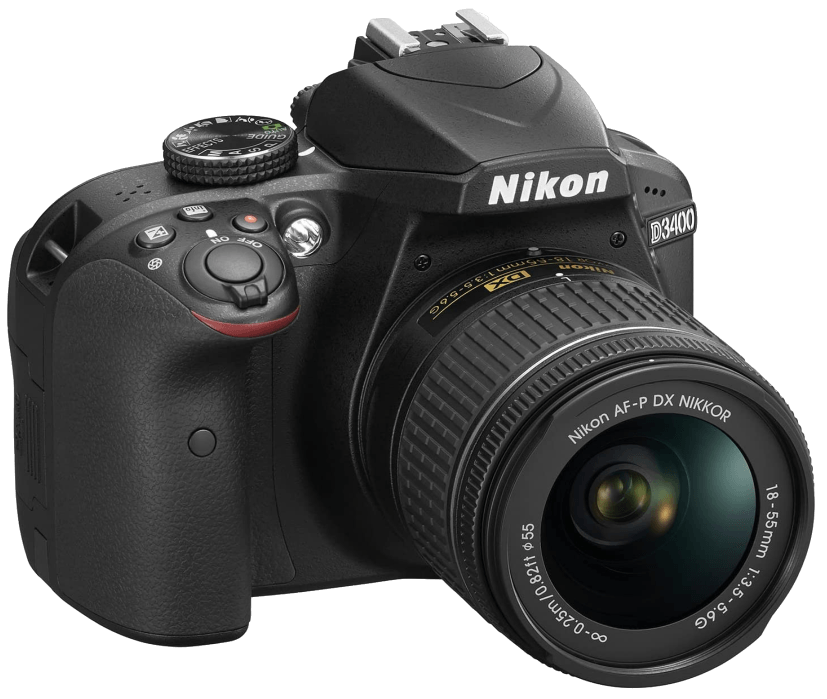Canon EOS 1D X Mark II vs Nikon D3400 Comparison
Canon EOS 1D X Mark II

Nikon D3400

The Canon EOS 1D X Mark II outperforms the Nikon D3400 with a score of 73/100 versus 61/100. Both cameras are DSLRs released in 2016, with the Canon having a launch price of $6,000 and the Nikon at $650. They share similarities in camera type, but the Canon excels in many aspects.
The Canon EOS 1D X Mark II has a larger size (158 x 168 x 83mm) and heavier weight (1530g) compared to the Nikon D3400 (124 x 98 x 76mm and 445g). This difference in size and weight contributes to the Canon’s superior performance and durability.
On the other hand, the Nikon D3400’s smaller size and lighter weight make it more portable and easier to handle for beginners. Its lower price point also appeals to those on a budget or just starting in photography.
In essence, the Canon EOS 1D X Mark II is a better camera for professionals seeking top performance, while the Nikon D3400 is a more accessible option for beginners or those prioritizing portability and budget.
Canon EOS 1D X Mark II vs Nikon D3400 Overview and Optics
The Canon EOS 1D X Mark II outperforms the Nikon D3400 in optics, with a score of 72/100 compared to the Nikon’s 65/100. Both cameras share some common specifications, such as a CMOS sensor, no image stabilization, and similar megapixel counts (20.2 for Canon and 24.2 for Nikon).
The Canon EOS 1D X Mark II’s superiority comes from its full-frame sensor, higher DXOMARK score (88), faster shooting speed (16), and dual Digic 6+ processor. The full-frame sensor provides better image quality and low light performance. The higher DXOMARK score represents better overall image quality. The faster shooting speed allows capturing more frames per second, which is beneficial for sports and action photography. The dual Digic 6+ processor ensures faster image processing and better performance.
On the other hand, the Nikon D3400 has a higher megapixel count (24.2), which could result in more detailed images. However, the camera’s APS-C sensor, lower DXOMARK score (86), and slower shooting speed (5) make it less competitive compared to the Canon EOS 1D X Mark II. The Nikon’s Expeed 4 processor is also less advanced than Canon’s dual Digic 6+ processor.
In terms of optics, the Canon EOS 1D X Mark II is the clear winner due to its full-frame sensor, higher DXOMARK score, faster shooting speed, and advanced processor. The Nikon D3400 may offer slightly more detailed images with its higher megapixel count, but it falls short in other important aspects. Both cameras have no image stabilization, but the Canon’s superior specifications make it a better choice for photographers who prioritize image quality and performance.
Canon EOS 1D X Mark II vs Nikon D3400 Video Performance
The Canon EOS 1D X Mark II outperforms the Nikon D3400 in video capabilities with a score of 69/100 compared to the D3400’s 56/100. Both cameras share some common specifications, such as a maximum video frame rate of 60fps and the lack of built-in time-lapse functionality.
The Canon EOS 1D X Mark II excels in video quality due to its 4K resolution, which offers four times the detail of Full HD resolution found in the Nikon D3400. This higher resolution results in sharper and more detailed videos, making the EOS 1D X Mark II a superior choice for professional videography. Additionally, the Canon camera provides a maximum video dimension of 4096 x 2160, which is significantly larger than the Nikon D3400’s 1920 x 1080. This larger dimension allows for more flexibility in framing and cropping during post-production.
On the other hand, the Nikon D3400 does not offer any specific advantages in video capabilities compared to the Canon EOS 1D X Mark II. Its Full HD resolution and maximum video dimension of 1920 x 1080 are standard features found in most entry-level DSLRs.
Considering the specifications and performance, the Canon EOS 1D X Mark II is the clear winner in terms of video capabilities, making it a better choice for those who prioritize video quality and post-production flexibility. The Nikon D3400, while lacking in video features, may still be suitable for casual videographers who do not require the advanced capabilities of the EOS 1D X Mark II.
Canon EOS 1D X Mark II vs Nikon D3400 Features and Benefits
The Canon EOS 1D X Mark II outperforms the Nikon D3400 in features with a score of 74 out of 100, while the Nikon D3400 scores 54 out of 100.
Both cameras share common specifications, such as lacking a flip screen and WIFI capabilities. However, the Canon EOS 1D X Mark II excels with a larger screen size of 3.2 inches compared to the Nikon D3400’s 3-inch screen. The Canon also boasts a higher screen resolution of 1,620,000 dots, whereas the Nikon has a resolution of 921,000 dots. This results in a clearer and sharper image display on the Canon camera. Furthermore, the Canon EOS 1D X Mark II features a touchscreen, making navigation and control more user-friendly. The camera also has GPS functionality, allowing for geotagging of photos.
On the other hand, the Nikon D3400 has its own advantage with built-in Bluetooth capabilities. This feature allows for seamless file transfer and remote control of the camera through compatible devices.
In terms of features, the Canon EOS 1D X Mark II is superior due to its larger and higher resolution screen, touchscreen functionality, and GPS capabilities. The Nikon D3400, however, offers a unique advantage with its Bluetooth connectivity. Both cameras have their strengths and weaknesses, and the choice between them ultimately depends on the individual’s preferences and requirements.
Canon EOS 1D X Mark II vs Nikon D3400 Storage and Battery
The Canon EOS 1D X Mark II triumphs over the Nikon D3400 in storage and battery with a score of 79/100, a 34-point difference from the D3400’s 45/100. Both cameras share the absence of USB charging capabilities. The 1D X Mark II offers better storage options, with two memory card slots accepting Compact Flash and CFast 2.0 cards, while the D3400 only has one slot for SD/SDHC/SDXC cards. Additionally, the 1D X Mark II has a slightly longer battery life at 1210 shots, compared to the D3400’s 1200 shots.
The 1D X Mark II’s dual memory card slots and support for faster CFast 2.0 cards provide more flexibility and improved performance for professional photographers. The D3400, however, may be more accessible for casual users with its compatibility with widely available SD cards.
In terms of storage and battery, the Canon EOS 1D X Mark II proves to be the superior option with its higher score, better storage capabilities, and slightly longer battery life. The Nikon D3400, while not as powerful, remains a suitable choice for casual users with its simpler storage system.
Canon EOS 1D X Mark II vs Nikon D3400 – Our Verdict
Are you still undecided about which camera is right for you? Have a look at these popular comparisons that feature the Canon EOS 1D X Mark II or the Nikon D3400:

